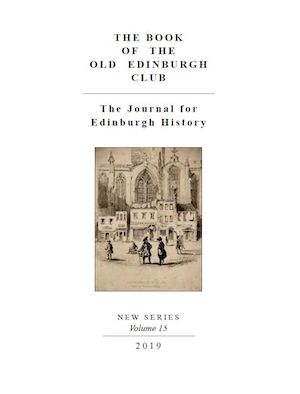The Book of the Old Edinburgh Club. New Series, Volume 15, 2019
Details
Published:
2019
ISBN:
978-0-9933987-4-2
Format:
Paperback, colour illustrations
Pages:
142
Publisher:
Old Edinburgh Club

About this item
The Book of the Old Edinburgh Club is the foremost journal for all aspects of Edinburgh history.
The Original Series goes back to 1908 and the foundation of the Old Edinburgh Club.
The New Series was begun in 1991.
Contents
Edinburgh As Athens: New Evidence to Support a Topographical and Intellectual Idea Current in the Early Nineteenth Century
Princes Street, Edinburgh: A Street of Encounter
Queen Victoria, Edinburgh, and a Sense of Place
‘Give Authority’, The Treasury and the Renovation of Holyrood, 1837-1909
Edinburgh Suffragists: Exercising the Franchise at Local Level
Kirkgate Comprehensive Development Area
Henrietta Wilson: The Chronicles of a Garden: Its Pets and its Pleasures
Cachepell and Tennis in Edinburgh in the Sixteenth and Seventeenth Centuries
‘Contributions at St Petersburg’: Patriotic Support for Public Monuments in Edinburgh in the Early Nineteenth Century
To Books & CDs
